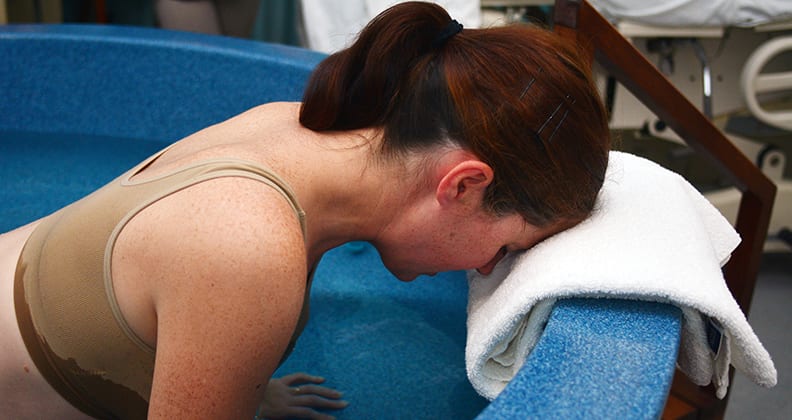Eighty per cent of the Western Australian women who planned to give birth in water experienced a normal, uncomplicated vaginal birth, suggesting midwives are selecting the appropriate women to labour and birth in water, new research by Curtin University and King Edward Memorial Hospital has found.
The research, published in the Australian and New Zealand Journal of Obstetrics and Gynaecology today, surveyed 502 women at WA’s sole tertiary public maternity hospital, King Edward Memorial Hospital (KEMH), between July 2015 and June 2016.
Lead author Dr Lucy Lewis, who has a joint appointment at Curtin’s School of Nursing, Midwifery and Paramedicine and KEMH, said of the 303 women who went on to labour in water, 59 per cent birthed in water and 41 per cent did not, showing that not all women who set out to labour and/or birth in water achieved their aim.
“This research found that women who were identified and approved to undertake labour in water were less likely than those who were not to be transferred to KEMH’s main birth suite, suggesting the labour had fewer or no complications, and they were more likely to have a normal or spontaneous vaginal birth,” Dr Lewis said.
“The main reason women who used water for their labour did not end up having a water birth was the fact they experienced an obstetric complication. This suggests the midwives at KEMH are following water birth guidelines by responding appropriately in the event a complication arises during labour.”
Dr Lewis said this finding was supported by the low caesarean rate among the cohort of women surveyed, meaning midwives were selecting low-risk pregnancies for water labour and/or births.
“Given the international concern surrounding the rising caesarean birth rate, our most encouraging finding relates to the small number of women who experienced caesarean birth – just six per cent,” Dr Lewis said.
“That figure compares to 37 per cent of women of all risk who gave birth at KEMH and 34 per cent of all WA women who birthed in 2013, suggesting again that midwives are accurately identifying low-risk pregnancies for water labour.”
In another paper led by Dr Lewis and published in BMC Pregnancy and Childbirth earlier this month, the primary reason women identified for planning a water birth was pain relief with many women saying they believed it would help them avoid an epidural.
Dr Lewis said the latest study recommended the collection of water birthing data across Australia to provide expectant mothers more information.
“As a result of this research, we recommend that maternity units who offer water immersion for labour and/or birth should collect and publish their data,” Dr Lewis said.
“We also recommend the establishment of a national body to collect and publish water birth data to help women make the best decision for themselves and their infants based on all the evidence.”
The paper, ‘Obstetric and neonatal outcomes for women intending to use immersion in water for labour and birth in Western Australia (2015–2016): A retrospective audit of clinical outcomes’, can be viewed here.



